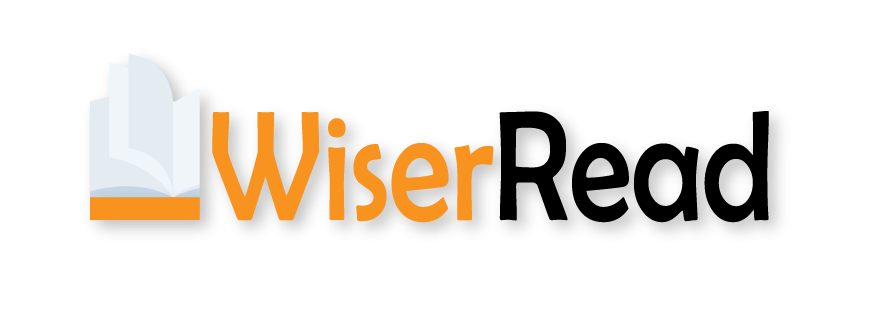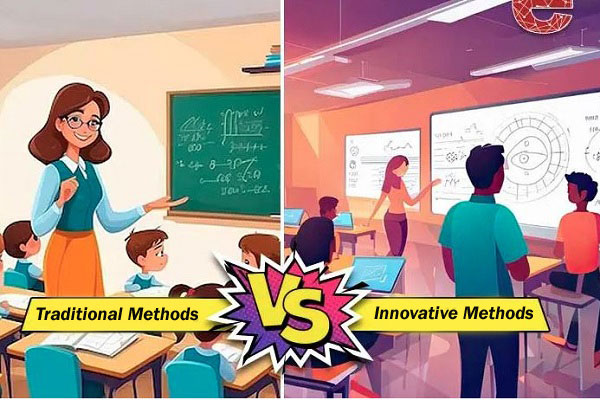The landscape of education is constantly evolving, with traditional and innovative teaching methods each playing a crucial role in shaping learning experiences. Traditional VS Innovative Teaching Methods with details has given here. You’ll get here also what’s the difference between Traditional teaching and Innovative teaching methods.
Understanding the differences between these approaches can help educators, students, and parents make informed choices about effective teaching and learning.
Traditional VS Innovative Teaching Methods
Traditional Teaching Methods
Definition: Traditional teaching methods often involve direct instruction, where teachers present information to students in a structured format, usually through lectures, textbooks, and standardized assessments.
Characteristics:
- Teacher-Centered: The teacher is the primary source of knowledge.
- Standardized Curriculum: Follows a set curriculum with little room for adaptation.
- Passive Learning: Students often listen and take notes rather than actively engaging with material.
- Assessment Focus: Heavy emphasis on exams and quizzes to measure understanding.
Innovative Teaching Methods
Definition: Innovative teaching methods prioritize student engagement, creativity, and critical thinking, often incorporating technology and collaborative learning strategies.
Characteristics:
- Student-Centered: Emphasizes active participation and student choice.
- Flexible Curriculum: Adapts to students’ needs and interests.
- Hands-On Learning: Encourages experiential learning through projects, discussions, and real-world applications.
- Diverse Assessments: Utilizes various forms of assessment, including portfolios, presentations, and peer reviews.
Key Differences on Traditional VS Innovative Teaching Methods
| Aspect | Traditional Teaching | Innovative Teaching |
|---|---|---|
| Approach | Teacher-led | Student-led |
| Learning Style | Passive | Active |
| Assessment | Standardized tests | Varied and formative assessments |
| Curriculum | Fixed | Adaptive and flexible |
| Technology Use | Minimal | Integral |
| Classroom Environment | Structured and controlled | Collaborative and open |
How to compare traditional and innovative methods of teaching?
In the ever-evolving landscape of education, understanding the differences between traditional and innovative teaching methods is crucial for educators, students, and parents. This guide outlines a systematic approach to compare these methods effectively, helping you make informed decisions about the best teaching practices.
Step 1: Define the Methods
Traditional Teaching Methods
- Characteristics: Primarily lecture-based, focused on rote learning and memorization. Emphasizes standardized testing and a fixed curriculum.
- Examples: Direct instruction, textbook assignments, and traditional exams.
Innovative Teaching Methods
- Characteristics: Emphasizes student engagement, critical thinking, and creativity. Utilizes technology and collaborative learning strategies.
- Examples: Project-based learning, flipped classrooms, and experiential learning activities.
Step 2: Identify Key Comparison Criteria
When comparing the two methods, consider the following criteria:
1. Teaching Approach
- Traditional: Teacher-centered, where the instructor is the primary source of knowledge.
- Innovative: Student-centered, focusing on active participation and student agency.
2. Learning Environment
- Traditional: Structured and often rigid; students are passive recipients of information.
- Innovative: Flexible and collaborative; encourages interaction and hands-on experiences.
3. Assessment Methods
- Traditional: Heavy reliance on standardized tests and quizzes to evaluate student performance.
- Innovative: Diverse assessment methods, including peer reviews, portfolios, and self-assessments.
4. Curriculum Design
- Traditional: Fixed and standardized curriculum with little room for personalization.
- Innovative: Adaptive curriculum that responds to student interests and real-world applications.
5. Technology Integration
- Traditional: Minimal use of technology, primarily for administrative tasks.
- Innovative: Extensive use of technology to facilitate learning, and research.
Step 3: Evaluate Outcomes
1. Student Engagement
- Traditional: Often results in passive learning; students may be less motivated.
- Innovative: Higher levels of engagement and enthusiasm; students take ownership of their learning process.
2. Critical Thinking Skills
- Traditional: May not adequately develop critical thinking; focus on memorization.
- Innovative: Promotes problem-solving and analytical skills through real-world challenges.
3. Collaboration Skills
- Traditional: Limited opportunities for teamwork; individual work is prioritized.
- Innovative: Encourages collaboration and communication among students, preparing them for the workplace.
Step 4: Gather Feedback
Collect insights from various stakeholders to enrich your comparison:
- Teachers: Their experiences with both methods can provide valuable perspectives on effectiveness and student outcomes.
- Students: Gather feedback on their preferences and engagement levels in both learning environments.
- Parents: Understand their perceptions of how well their children are learning under each method.
Step 5: Make an Informed Decision
After evaluating the criteria and gathering effective feedback, summarize your findings to determine which method aligns best with your educational goals. Consider blending elements from both approaches to create a hybrid model that meets diverse learning needs.
What’s the difference between Traditional Teaching and Modern Teaching?
Traditional teaching is often characterized by a teacher-centered approach, where the instructor delivers information through lectures and direct instruction. Now, let’s discuss the difference between Traditional teaching and Modern Teaching. This method typically emphasizes rote memorization, standardized testing, and a fixed curriculum, resulting in a more passive learning environment.
In contrast, modern teaching adopts a student-centered approach that prioritizes engagement, collaboration, and critical thinking. It incorporates innovative techniques such as project-based learning, technology integration, and experiential activities.
Modern teaching encourages students to take an active role in their learning, fostering creativity and adaptability in a rapidly changing world. In essence, while traditional teaching focuses on knowledge delivery, modern teaching emphasizes skill development and student empowerment.
Read also: Why online education is better than traditional education?
How do You Become a Certified Educational Consultant?
FAQs
Which method is more effective for learning?
The effectiveness often depends on the subject matter and individual learning styles. Innovative methods tend to foster deeper understanding and engagement, while traditional methods can be effective for foundational knowledge.
Can innovative methods be implemented in traditional classrooms?
Absolutely! Teachers can incorporate elements of innovative teaching, such as group projects or technology use, within traditional frameworks to enhance engagement.
What role does technology play in innovative teaching?
Technology is a crucial component, providing tools for collaboration, access to diverse resources, and opportunities for interactive learning experiences.
Are traditional methods completely outdated?
Not necessarily. Traditional methods have their place, especially for delivering core content efficiently. The key is to find a balance between the two approaches.
How can teachers transition from traditional to innovative methods?
Start by incorporating small changes, such as group discussions or project-based learning, and gradually expand the use of technology and collaborative strategies.
Conclusion
Both traditional and innovative teaching methods have unique strengths that can benefit students in different ways. By understanding the best of both worlds, educators can create a more dynamic and effective learning environment that prepares students for the challenges of the future.

